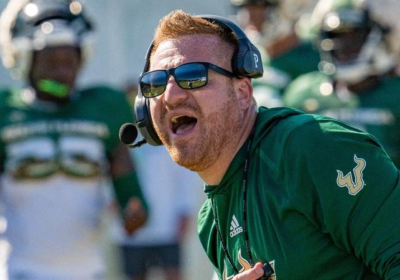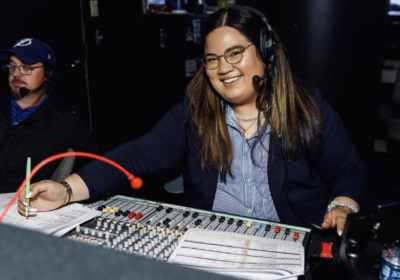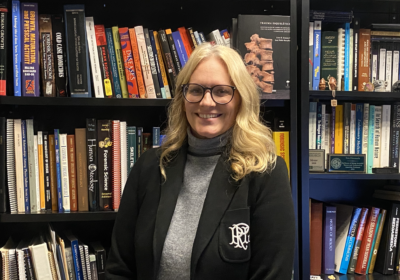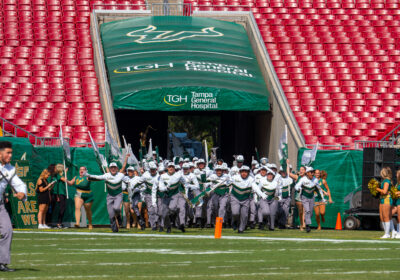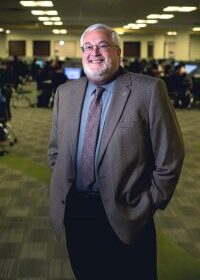Past visits paid by politicians
Politicians have lately become the predominant houseguests at USF – as former presidents and prospective senators and governors fill the schedules for this week and next.
On Sunday at 9 a.m., U.S. Senate candidates Charlie Crist, Kendrick Meek and Marco Rubio will hold a three-way debate. Then, on Monday at 7 p.m., Florida gubernatorial candidates Rick Scott and Alex Sink will discuss their stances.
Combined with an appearance Tuesday by Bill Clinton at USF’s St. Petersburg campus, the two weeks recall a history of visiting politicians of different parties, positions and places around the University.
The Oracle looks at this decade’s drop-ins by senators, presidential candidates and other politicos.
Al Gore
Nov. 7, 2000
Students might be surprised to learn that Al Gore was walking campus ground on Election Day in 2000.
Gore spoke at H. Lee Moffitt Cancer Center before 5 a.m. to fewer than 10 nurses and more than 100 news sources, such as the New York Times, on his stance on patient care and prescription drugs.
After his appearance, he visited the Florida Bakery on Columbus Drive to buy doughnuts to thank his campaign workers before flying home to Tennessee.
On Sept. 30, Gore returned to Tampa to rally for Meek at the small, 500-seat Letter Carriers Hall on Cypress Street.
Ralph Nader
April 12, 2002
Consumer advocate and four-time, third-party presidential candidate Ralph Nader came to USF in a fashion unlike any other politician – a traveling concert tour.
Nader headlined a Democracy Rising rally that drew a crowd of more than 6,000 people and also featured filmmaker Michael Moore and Dead Kennedys singer Jello Biafra.
However, Nader’s visit wasn’t the only time a progressive or third-party presidential candidate came to USF.
Democratic Congressman Dennis Kucinich was the sole speaker at USF’s 2004 presidential forum, and former Alaska Sen. Mike Gravel, who ran a failed bid for a Libertarian Party candidacy, spoke at USF in 2007.
George W. Bush
Nov. 2, 2002
When George W. Bush spoke at the Sun Dome in 2002, it marked the first sitting president’s appearance on campus since Ronald Reagan in 1986 – and the last since.
The event drew about 10,000 attendees, as Bush promoted his brother Jeb’s gubernatorial re-election campaign and discussed Saddam Hussein and a strike that would eventually materialize into the 2003 invasion of Iraq.
Unsurprisingly, the rally brought its share of controversy as hundreds protested and seven were arrested for protesting beyond designated campus zones.
Retired Gulf War commander Gen. Norman Schwarzkopf introduced the event.
John Kerry
June 2, 2004
Next week’s debates won’t be the first time a politician has chosen a USF Fine Arts building to speak – as Kerry spoke in Theatre 2 during his 2004 presidential campaign.
Under banners that read “Strengthening America’s Security,” the Massachusetts senator spoke on a panel about bioterrorism at a time when the U.S. anthrax attacks were less than two years old.
Kerry also said that bioterrorism would only be prevented by fixing other troubles in the nation, including struggling foreign relations and “a broken health care system.”
Jeb Bush
Jan. 30, 2006
A stop at USF from a governor or gubernatorial candidate is more common than presidential hopefuls, as evidenced by former Florida Gov. Jeb Bush.
Besides his 2002 re-election rally, Jeb also made a quiet, brief speech at USF Research Park to discuss a $630 million investment.
Members of the Bush family have made numerous visits to USF – Jeb Bush’s son George P. Bush held a 2000 election rally on campus – and Jeb Bush is currently supporting Scott as Florida governor.
Joe Biden
Oct. 8, 2008
A month before he was elected vice president, Joe Biden addressed more than 3,000 supporters during a Democratic rally at the Sun Dome.
During his 30-minute speech, Biden bemoaned the “low road politics” of the McCain-Palin ticket and argued that McCain was less a maverick than a “sidekick.”
Yet, the moment that has lived on wasn’t a quote from Biden, but rather campaign volunteer Jim Piccolo, who introduced him as “John McCain.” A video of the mistake currently has nearly 170,000 views on YouTube.

